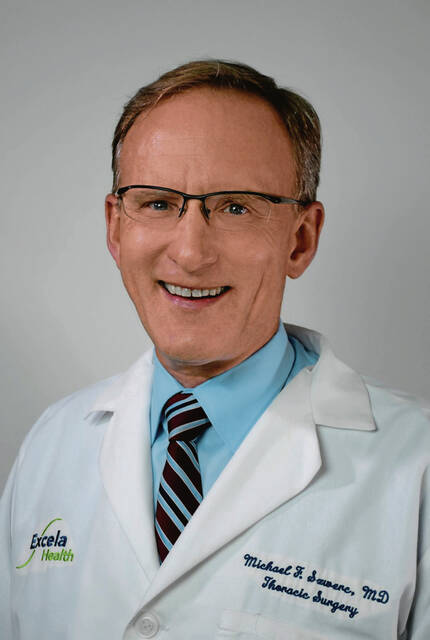Lung cancer is one of the most daunting of cancer diagnoses, but there is hope. By early screening for lung cancer, doctors can intervene when it is most treatable, have more treatment options at their disposal and initiate care before the disease has spread.
Tell us about the use of low-dose CT scans in the diagnosis of lung cancer.
Dr. Szwerc: Extensive research has determined that lung cancer screening through low-dose CT scans, computerized tomography, is an effective tool in the diagnosis of lung cancer. The scan is a noninvasive, painless test that uses a low dose of radiation, what you would find similar to a mammogram. It works by taking multiple, three-dimensional pictures from inside the body to produce highly detailed images of a patient’s lungs.
These images are quite revealing and can show clinicians even the earliest stage of lung cancer that may be too small for regular chest X-rays to detect.
That’s an important point about its comparison to routine chest X-rays, isn’t it?
Dr. Szwerc: Absolutely. Patients often find a false sense of security after undergoing a routine chest X-ray. Although X-ray technology has advanced in recent years with the use of high resolution, digital equipment, the smallest nodule it can detect is limited to one to two centimeters. With resolution capabilities under less than one centimeter and the ability to generate 3D views of the lungs, the low-dose CT scan has generated much enthusiasm as a high-quality substitute to X-rays and a very effective early diagnostic tool in lung cancer.
What has been your experience with the use of low-dose CT scans at the Excela Health Advanced Lung Center?
Dr Szwerc: Since 2016, the Center has performed more than 12,000 low dose screening CT scans. Of that patient population, we have detected just over 160 lung cancers with more than 70% of those being found to be in early Stage I or Stage II of the disease, stages that often lead to more treatment options and potentially better outcomes. Those data are most compelling as to the benefits derived through lung cancer screening by low-dose CT scans, both from a patient and physician perspective.
Now, there are certain guidelines for patients to undergo a screening low-dose CT scan, correct?
Dr. Szwerc: Yes. In fact, guidelines recently have been expanded over those that were previously in place. According to both the National Comprehensive Cancer Network and the U.S. Preventative Services Task Force, present recommendations for current or former smokers include: first screenings beginning at 50 and continuing until 80, a pack-year history of 20, meaning smoking at least a pack-a-day for 20 years, and smokers who have quit smoking in the past 15 years. Patients with a prior history of lung cancer also should be considered for screening.
November is Lung Cancer Awareness Month. What do current statistics tell us?
Dr. Szwerc: They tell us that while progress is being made, the challenges of the disease remain significant. This year alone, more than 236,000 men and women in the United States will be diagnosed with lung cancer. Currently, 1 in 15 Americans will be diagnosed in their lifetime. Each year, the disease kills twice as many women as breast cancer. Even more important, Westmoreland County exceeds the state and national rate for lung cancer because of an older population that includes a significant number of current and former smokers, many of whom have also had significant occupational exposure to cancer-causing agents.
And the takeaway message is?
Dr. Szwerc: For those patients whose cancer is detected in its early and potentially curable stages, there is significant hope. Often, these patients are eligible for minimally invasive surgical procedures using robotic technology designed to treat the cancer. Yet, regretfully, fewer than one in seven individuals present at an early or curable stage. It’s important to recognize that many people simply don’t want to know their status. They should be aware that they have a 98% chance of a normal low-dose CT scan on their visit to us. If an individual meets the guidelines for screening, they need to get screened. It’s that simple … and it can be lifesaving.







